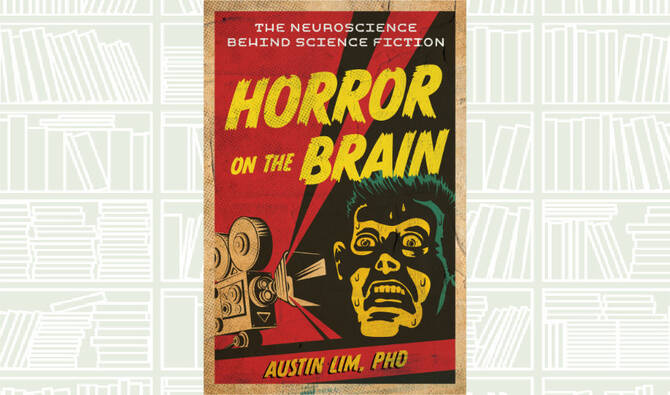Why do we get a kick out of being scared? Why do we find it difficult to look away from a train wreck? In “Horror on the Brain: The Neuroscience Behind Science Fiction,” neuroscientist Austin Lim takes a scalpel to that question — examining fear, not just as a feeling nor merely as a survival mechanism, but as a thrill, and even a form of entertainment.
Published recently by Prometheus Books, the work dives into the science of what horror does to our brains and why we keep coming back for more.
“Curiosity exists only because of the unknown. Conveniently, the unknown is also the birthplace of horror,” writes Lim. “Even before literacy, people had been making haunting ‘what-if’ stories about the biggest unknowable: what happens after death.”
I was hooked.
Lim, who teaches neuroscience at DePaul University in the US, has made a career of blending biology with pop culture. He brings that dynamic energy to this book, cutting through academic jargon to explain the science behind it: how blood, suspense and dread dig into our brain’s deepest wiring. And why.
Each chapter dissects a different horror hallmark: jump scares, body horror, creepy music, monsters — even killer AI. Lim shows how horror stories hijack our neural pathways, from the amygdala’s panic response to the brain’s craving for novelty and resolution.
He argues that horror is more than shock value; it is a mental playground where we rehearse danger, confront taboos and make sense of the world’s chaos. Being scared jumpstarts us. Like a rollercoaster, that rush of blood and brush with danger make us feel alive.
Among the most provocative insights is his take on gore and violence. Why do we flinch — yet keep watching?
Lim explains how exposure to violence can affect empathy; how cultural background shapes what we fear and why some viewers are desensitized, while others are rattled for days.
“Horror on the Brain” is part neuroscience, part social commentary. A wicked read.
Lim also unpacks horror in literature and speculative fiction, tracing how science fiction from “Frankenstein” to “Black Mirror” taps into the same neural circuitry as slasher films.
Lim’s writing is sharp and crystal clear. You do not need a science degree to follow — just a curious mind and maybe a strong stomach.
This book will make you think twice about what really makes your skin crawl — and why you like it.

























